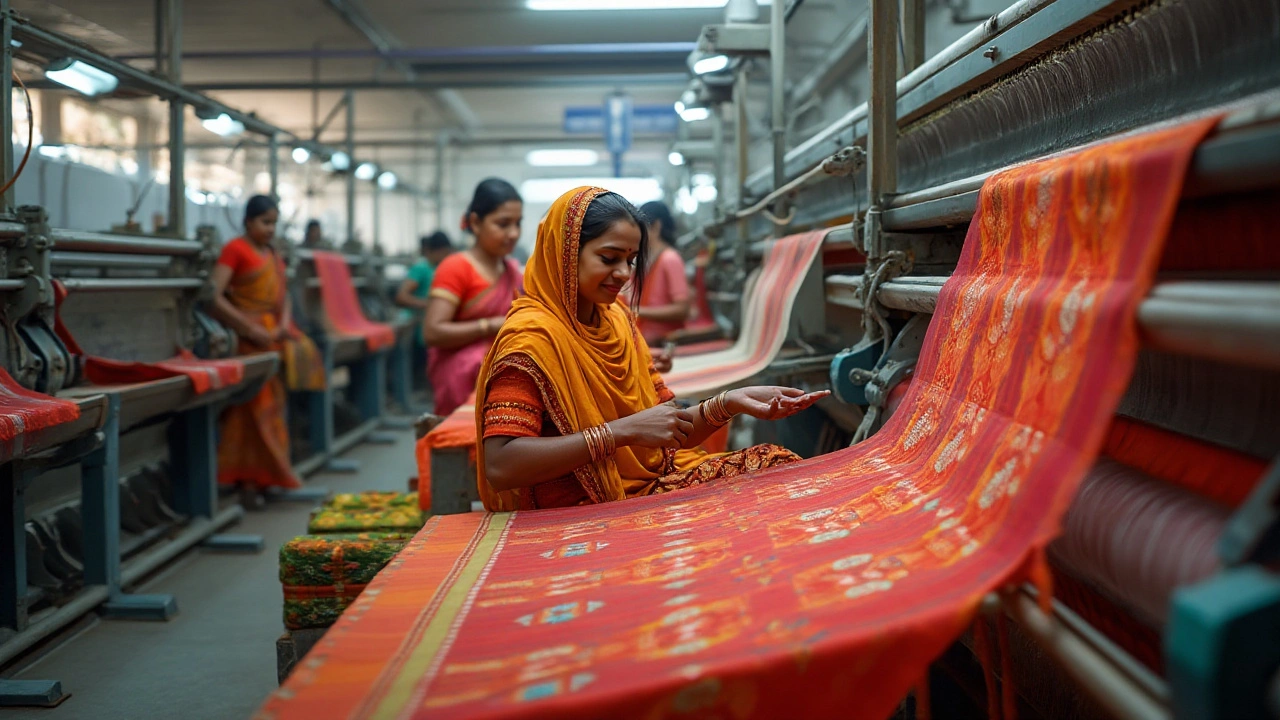Textile Industry in India: Trends, Opportunities, and Challenges
When working with Textile Industry in India, the network of farms, factories, and design houses that turn raw fibers into fabrics and finished garments. Also known as Indian textile sector, it fuels employment, export earnings, and a wave of innovation.
A cornerstone is Cotton Production, India's top raw material source, covering more than 30 million hectares and supplying roughly half of the country's textile input. The industry also leans heavily on Apparel Manufacturing, the process that transforms yarn and fabric into ready‑to‑wear clothing for domestic and export markets. Modern Textile Machinery, high‑speed looms, fiber‑processing units, and automated cutting systems, enable faster turn‑around and higher quality.
Key Drivers of Growth
First, rising disposable income lifts demand for fashion‑forward apparel, pushing manufacturers to diversify product lines. Second, government initiatives like the Production‑Linked Incentive (PLI) scheme lower capital costs for upgrading to smart machinery. Third, sustainability has become a competitive edge—consumers and brands are gravitating toward organic cotton, water‑saving dyeing techniques, and circular‑economy models. Together, these forces create a loop: the textile industry in India requires efficient cotton supply, which in turn spurs investment in advanced machinery, leading to higher export volumes and stronger policy support.
Export data shows that textiles account for over 10 % of India's total merchandise exports, placing the sector among the top earners of foreign exchange. This export strength is linked to the ability to produce a wide range of fabrics—from traditional handlooms to high‑tech technical textiles used in automotive and medical applications. The sector’s versatility also opens doors for niche markets like performance wear and smart fabrics, where value addition eclipses volume‑based growth.
Skill development is another piece of the puzzle. Technical institutes and private training centers churn out millions of skilled workers each year, covering everything from loom operation to computer‑aided design (CAD). This talent pool helps firms adopt lean manufacturing and 5S principles, which improve efficiency and reduce waste. In fact, factories that integrate 5S see a 15‑20 % boost in productivity, according to recent industry surveys.
Challenges remain, however. Raw material price volatility, especially for cotton, can squeeze margins. Energy costs and water scarcity also pressure manufacturers to adopt greener practices. Lastly, compliance with global standards—such as the Sustainable Apparel Coalition’s Higg Index—requires continuous investment in auditing and certification.
Despite these hurdles, the outlook stays positive. Investment into automated looms and AI‑driven quality control systems is expected to grow by double digits over the next five years. Companies that align with sustainability goals and leverage technology will capture the most market share, while smaller players may find niche opportunities in bespoke or heritage textiles.
Below you’ll find a curated set of articles that dive deeper into product ideation for startups, pharma rankings, fast‑money strategies, and more—all reflecting the broader manufacturing landscape that the Indian textile sector is part of. Explore the collection to see how trends in product development, profitability, and technology intersect with the textile world.
